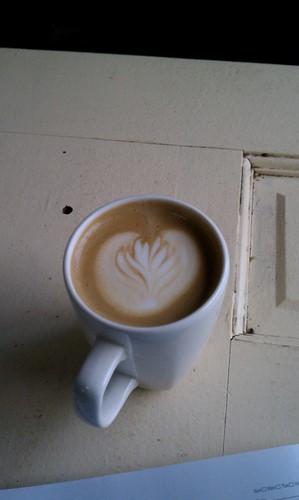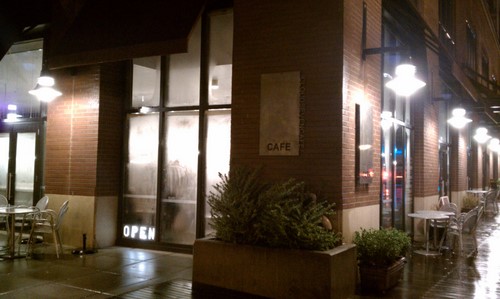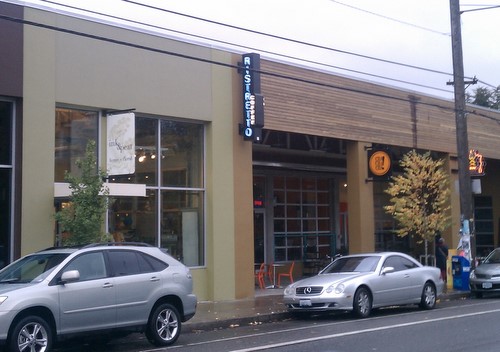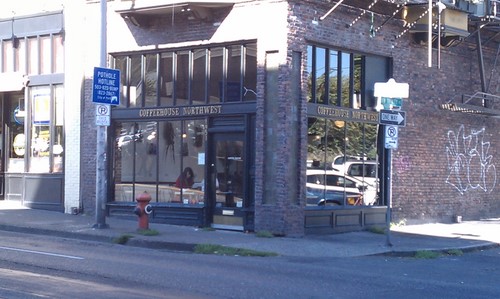Today, I wasn’t in the mood for espresso. Well, actually I was, but I wasn’t in the mood for anything but great espresso and I didn’t feel like getting on a bus to go find some. It’s not that I mind driving so much, it’s just that when I travel around the city, I prefer to walk or use public transportation when possible. Call it my small protest against the car culture. We should not have to drive a car to get places if we don’t want to.
Some days, however, it just takes too long to get anywhere on the bus and I don’t feel like wasting time, even to find great coffee. Today was one of those days, so I chose to go to a nearby café and try something new.
Instead of espresso, I decided to ‘turn over a new leaf’ and order tea (no extra charge for the pun). Looking at the café’s list of teas, I found a couple that looked interesting, including one that was called “Formosa Panfired”. The name was appealing—I like a lot of pan-fired things (or at least pan-fried)—and I asked the barista on duty what it was like. He responded that he “had no idea” and that he didn’t really drink tea. While I think that anyone who works at a café ought to try all the beverages so at least they have opinions, you could argue that he deserved a pass, since it was a coffee shop.
He brought the tin of tea leaves over to me and it smelled good, so I decided to try it. For the record, I do not know what type of vocabulary tea tasters and tea drinkers use to talk about their tea, but I’ll try to describe it anyway. If you are someone who is excited about tea and would like to comment or share your knowledge with us, please know that you are invited to do so.
Judging by the tea’s name, I assume that it was from Taiwan (Formosa, or “beautiful”, is what the Portuguese explorers called Taiwan when they passed by the island five hundred years ago). A quick check of a tea vendor’s website revealed that pan-fired tea has been steamed and then rolled in iron pans over a charcoal fire.
The tea was a green variety that seemed fairly sweet (without sugar). It had a pleasant, grassy taste (like dry alfalfa hay), medium body and some mineral undertones that reminded me of the way a chunk of quartz tastes. Along with the earthiness (grass + rocks), there was just a hint of bitterness or “crispness” too, similar to the bite that certain olive oils have when you taste them. The bitterness increased over time, probably due to the fact that I didn’t take the tea out of the cup after a few minutes of steeping.
Tea drinking is associated more with Eastern society than with Western society (though the British might disagree), so learning about them is a way to learn about other cultures, something that is very valuable. For example, green tea is especially well-revered in Japan, where the people attribute the long Japanese life expectancy to their high levels of green tea consumption. Ceremonial green tea preparation is a centuries-old tradition that anyone traveling to Japan should see. Tea is important to China too. When I was in Beijing last summer, there was tea available at nearly every meal.
Although I only drink teas once in a while, I plan to further explore tea in the future and share my findings with you through Caffeinated PDX. After all, if I’m not willing to walk or ride the bus across town, I’m going to have to find an occasional substitute for espresso. Tea is “caffeinated” too, so it fits with the theme. Right now, I don’t have the same standards for tea that I do for coffee, so I won’t be disappointed if my tea isn’t great. We’ll see if that changes over time.



